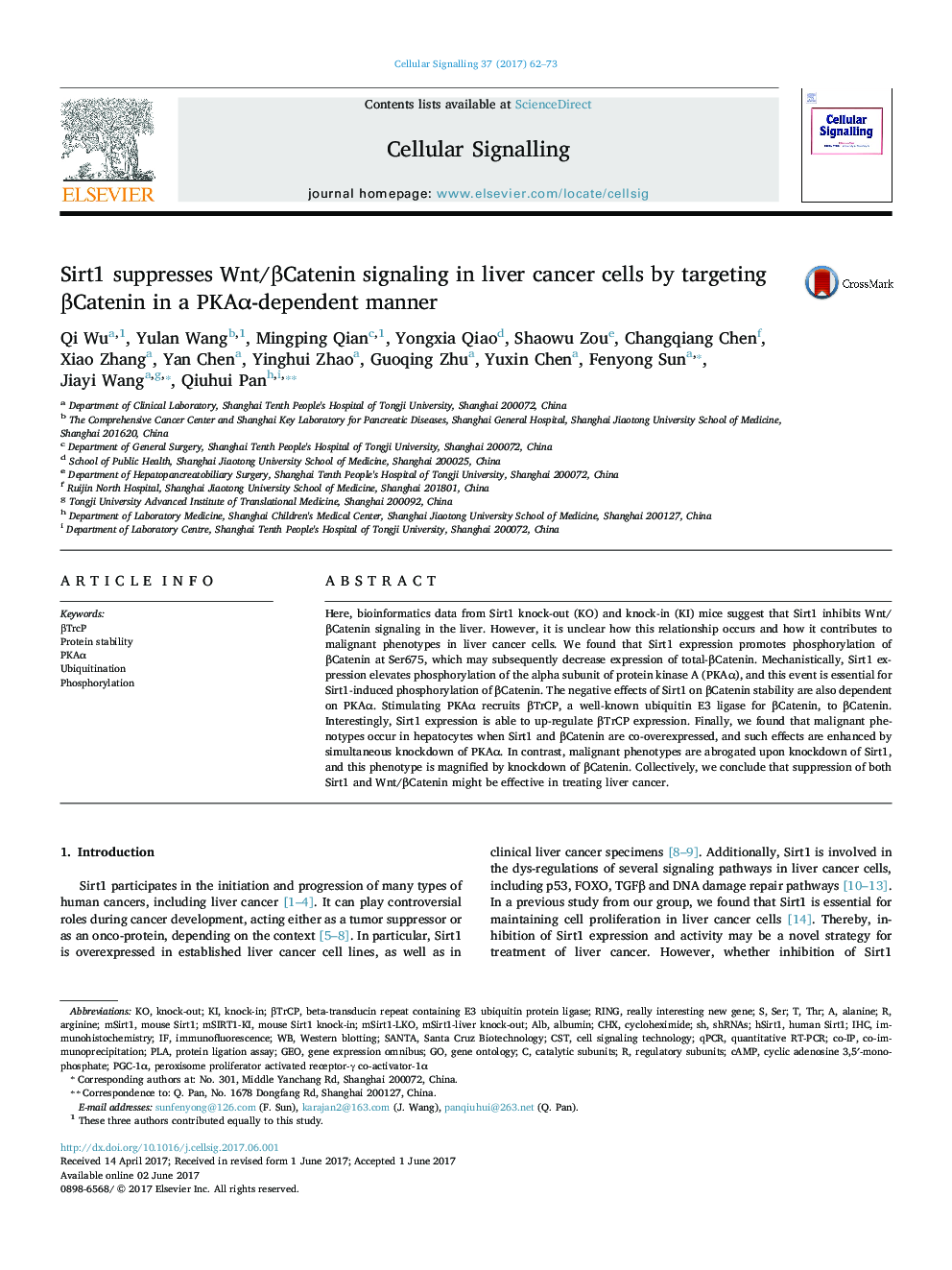| Article ID | Journal | Published Year | Pages | File Type |
|---|---|---|---|---|
| 5509200 | Cellular Signalling | 2017 | 12 Pages |
Abstract
Here, bioinformatics data from Sirt1 knock-out (KO) and knock-in (KI) mice suggest that Sirt1 inhibits Wnt/βCatenin signaling in the liver. However, it is unclear how this relationship occurs and how it contributes to malignant phenotypes in liver cancer cells. We found that Sirt1 expression promotes phosphorylation of βCatenin at Ser675, which may subsequently decrease expression of total-βCatenin. Mechanistically, Sirt1 expression elevates phosphorylation of the alpha subunit of protein kinase A (PKAα), and this event is essential for Sirt1-induced phosphorylation of βCatenin. The negative effects of Sirt1 on βCatenin stability are also dependent on PKAα. Stimulating PKAα recruits βTrCP, a well-known ubiquitin E3 ligase for βCatenin, to βCatenin. Interestingly, Sirt1 expression is able to up-regulate βTrCP expression. Finally, we found that malignant phenotypes occur in hepatocytes when Sirt1 and βCatenin are co-overexpressed, and such effects are enhanced by simultaneous knockdown of PKAα. In contrast, malignant phenotypes are abrogated upon knockdown of Sirt1, and this phenotype is magnified by knockdown of βCatenin. Collectively, we conclude that suppression of both Sirt1 and Wnt/βCatenin might be effective in treating liver cancer.
Keywords
GEOPGC-1αCHXTHRALBPLAβTrCPqPCRshRNAsCatalytic subunitscAMPCStquantitative RT-PCRArgininealanineAlbuminImmunofluorescenceImmunohistochemistryIHCSERRingknock-inregulatory subunitscycloheximideCo-IPPhosphorylationknock-outGene ontologyCo-ImmunoprecipitationWestern blottingProtein stabilityGene Expression Omnibusreally interesting new geneubiquitination
Related Topics
Life Sciences
Biochemistry, Genetics and Molecular Biology
Biochemistry
Authors
Qi Wu, Yulan Wang, Mingping Qian, Yongxia Qiao, Shaowu Zou, Changqiang Chen, Xiao Zhang, Yan Chen, Yinghui Zhao, Guoqing Zhu, Yuxin Chen, Fenyong Sun, Jiayi Wang, Qiuhui Pan,
